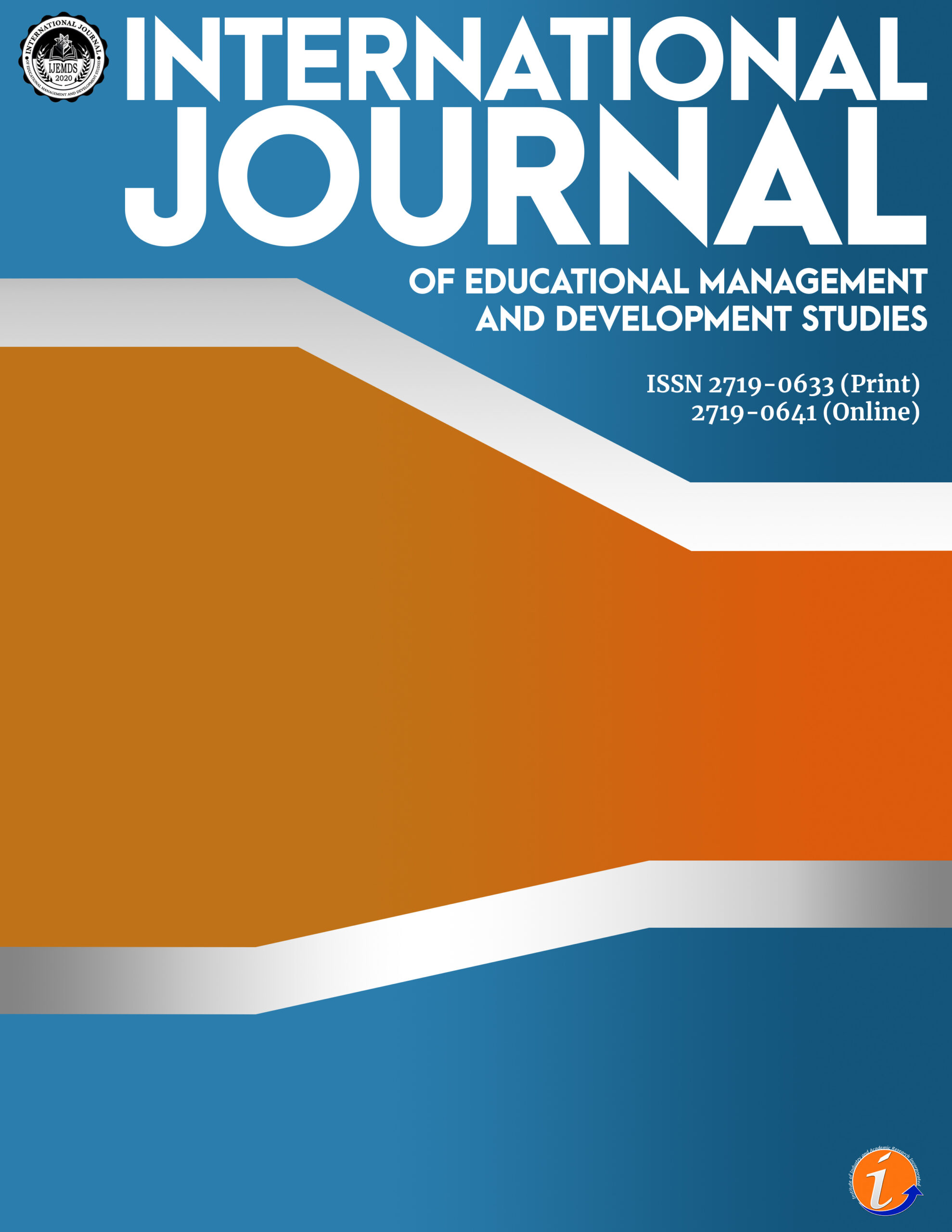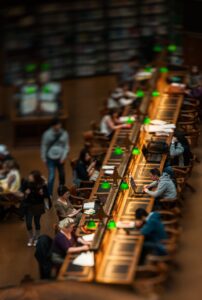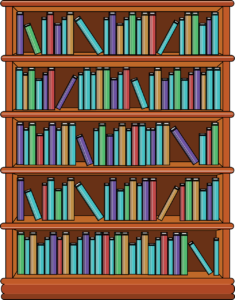The study was conducted to identify the significant relationship on utilizing flipped classroom in improving the economic skills and social learning of grade 9 students. With the use of descriptive-quantitative research design wherein information was gathered about the variables without changing the environment, the study was conducted with 108 students of a public national high school in the Philippines. A researcher-made questionnaire was formulated to gather the responses of the participants. The study was conducted to identify the significant relationship between utilizing Flipped Classroom Practices to improve the academic achievement of grade 9 students in Araling Panlipunan. In relation to this, the study gained the responses of 108 Grade 9 learners through the cluster sampling method. Furthermore, the study utilized descriptive quantitative for its research design, focusing on the Grade 9 learner’s. In relation to the academic achievement of grade 9 students, the teachers were able to get the interest of the students, collaboration was promoted among the students, and the learning environment helped the student to achieve more academically. It was also concluded that the student-centered flipped classroom practices were able to affect the economic skills of the students in terms of analyzing hence, implying that the student-centered practices were helpful in improving the economic skills of the students in terms of analyzing. Moreover, the flipped classroom practices were also able to affect the social learning of the students, wherein the flipped classroom practices were able to improve the student’s social learning. For this reason, teachers may provide other means of making the student more engaged in the lessons being discussed, such as providing an assessment on every finished lesson to keep the students more focused during discussions.
flipped classroom, connectivity, economic skills, social learning
Divina M. Hidalgo. Corresponding author. Laguna State Polytechnic University. Corresponding email: divinahidalgo83@gmail.com
Elsa C. Callo. Doctor of Education, College Professor, Laguna State Polytechnic University
This paper is presented in the 3rd International Conference on Multidisciplinary Industry and Academic Research.
Alay, B. P. (2021). Social interaction of students in Araling Panlipunan of Selected Junior High School in San Antonio de Padua College during the Pandemic. EPRA International Journal of Research and Development (IJRD). Volume 6, Issue 7. DOI: 10.36713/epra2016
Alharbi, A. H. (2015). “A Flipped Learning Approach Using Social Media in Health Informatics Education.” Creative Education 6 (13): 1466-1475
An, Y. & Mindrila, D. (2020). Strategies and tools used for learner-centered instruction. International Journal of Technology in Education and Science (IJTES), 4(2), 133- 143.
Baker, C. (2017). Quantitative research designs: Experimental, quasi-experimental, and descriptive. Evidence-based practice: An integrative approach to research, administration, and practice, 155-183.
Balta, N., & Duran, M. (2018). Attitudes of students and teachers towards the use of interactive classrooms in elementary and secondary school classrooms. Turkish Online Journal Educational Technology-TOJET, 14(2), 15-21.
Bergmann, J., and Sams, A. (2012). “Flip Your Classroom: Reach Every Student in Every Class Every Day.” OR: International Society for Technology in Education.
Bursa, S., & Çengelci Köse, T. (2020). The effect of flipped classroom practices on students’ academic achievement and responsibility levels in social studies courses. Turkish Online Journal of Distance Education. Volume 21, Issue 4, 143 – 159, 01.10.2020
DeBoer, J., Ho, A. D., Stump, G. S., & Breslow, L. (2014). Changing “course”: Reconceptualizing educational variables for massive open online courses. Educational Researcher, 43(2), 74–84. http://dx.doi.org/10.3102/0013189X14523038
Eneriz, A. (2019). How teachers are integrating technology into the classroom. Northeastern University. https://www.northeastern.edu/graduate/blog/integrating-technology-into-teaching/
Ercan-Demirel, E. (2016). “Basics And Key Principles Of Flipped Learning: Classes Upside Down.” International Journal of Languages, Literature and Linguistics 2 (3): 109-112.
Fiel, J., Lawless, K. A., & Brown, S. W. (2018). Timing Matters: Approaches for Measuring and visualizing Behaviours of Timing and Spacing of Work in Self-Paced Online TeacherProfessional Development Courses. Journal of Learning Analytics, 5(1), 25-40.
Flipped Learning Network. (2017). “The Four Pillars of FLIP™.” Retrieved from https://flippedlearning.org/wpcontent/uploads/2016/07/FLIP_handout_FNL_Web.pdf
Gaba, A., Bhushan, B., & Rao, D. K. (2021). Factors influencing the preference of distance learners to study online during the COVID-19 pandemic. Asian Journal of Distance Education, 16(1), 194-206.
Halili, S.H., & Sulaiman, H., (2018). Factors influencing the rural students’ acceptance of using ICT for educational purposes. Kasetsart Journal of Social Sciences, 1-6. https://doi.org/10.1016/j.kjss.2017.12.022
Huber, E., and Werner, A. (2019). “A Review of The Literature On Flipping The STEM Classroom: Preliminary Findings.” In S. Barker, S. Dawson, A. Pardo, and C. Colvin (Eds.) Show Me The Learning. Proceedings ASCILITE 2016 Adelaide (pp. 267-274).
Huitt, W., & Hummel, J. (2003). Piaget’s theory of cognitive development. Educational psychology interactive, 3(2), 1-5.
Kassem, H. M. (2019). The Impact of Student-Centered Instruction on EFL Learners’Effectt and Achievement. English language teaching, 12(1), 134-153.
Kaymakamoğlu, S. E. (2018). Teachers‟ beliefs, perceived practice,e and actual classroom practice in relation to traditional (teacher-centered) and constructivist (learner-centered)teaching. Journal of Education and Learning, 7(1), 29-37.
Kovanović, V., Gašević, D., Dawson, S., Joksimović, S., Baker, R. S., & Hatala, M. (2015 ). Does time-on-task estimation matter? Implications for the validity of learning analytics findings go. Journal of Learning Analytics, 2(3), 81–110.http://dx.doi.org/10.18608/jla.2015.23.6
Kozikoglu, I. (2019). Analysis of the studies concerning flipped learning model: A comparative meta-synthesis study. International Journal of Instruction, 12(1), 851-868.
Lavoue, E, Baptiste, M., Michel, D., & Sebastien, G. (2019). Adaptive Gamificatioforfor Learning Environments. IEEE Transactions on Learning Technologies, 12(1), 16-28.https://doi.org/10.1109/TLT.2018.2823710
Levy, S. (2020). Six factors to consider when planning an online distance learning prograhigherherer education. Online Journal of Distance Learning Administration, 6(1).
Margulieux, L. E., McCracken, W. M., and Catrambone, R. (2018). “Mixing In-Clasanonlinene Learning: Content Meta-Analysis of Outcomes For Hybrid, Blended, And Flipped Courses”. In O. Lindwall, P. Hakkinen, T. Koschmann, P. Tchounikine, & S. Ludvigsen (Eds.) Exploring the Material Conditions of Learning: computer-SuppoSupportedaborative Learning (CSCL) Conference (pp. 220-227).
McNulty, N. (2021). 5 ways technology is helping teachers do their jobs better. Learning by Design. https://www.niallmcnulty.com/2021/06/5-ways-technology-is-helping-teachers-do-their-jobs-better/
Meepung, T., Pratsri, S., & Nilsook, P. (2021). Interactive Tool in Digital Learning Ecosystem for Adaptive Online Learning Performance. Higher Education Studies, 11(3), 70-77.
Miyamoto, Y. R., Coleman, C. A., Williams, J. J., Whitehill, J., Nesterko, S., & Reich, J. (2018). Beyond time-on-task: The relationship between spaced study and certification in MOOCs. Journal of Learning Analytics, 2(2), 70–74. http://dx.doi.org/10.2139/ssrn.2547799
Perna, L. L., Ruby, A., Boruch, R. F., Wang, N., Scull, J., Ahmad, S., & Evans, C. (2017).Moving through MOOCs: Understanding the progression of users in massive open online courses. Educational Researcher, 43(9), 421–432.
http://dx.doi.org/10.3102/0013189X1456242
Pratsri, S., & Nilsook, P. (2020). Design on Big Data Platform-Based in Higher Education Institute. Higher Education Studies, 10(4), 36. https://doi.org/10.5539/hes.v10n4p36
Rabin, E., Kalman, Y.M., & Kalz, M. (2020). The cathedral’s ivory tower and the open education bazaar catalyze innovation in the higher education sector. Open Learning: The Journal of Open, Distance and e-Learning, 35(1), 82-99. https://doi.org/10.1080/02680513.2019.1662285
Rahman, A. A., Aris, B., Mohamed, H., and Zaid, N. M. (2017). “The Influences Of Flipped Classroom: A Meta-Analysis.” In Engineering Education (ICEED) 2014 IEEE 6th Conference on (pp. 24-28).
Rohrer, D. (2018). Student instruction should be distributed over long time periods. Educational Psychology Review, 27(4), 635–643. http://dx.doi.org/10.1007/s10648-015-9332-4
Uzunboylu, H. ve Karagözlü, D. (2017). “The Emerging Trend Of The Flipped Classroom: A Content Analysis Of Published Articles Between 2010 And 2015”. RED. Revista de Educación a Distancia (54).
Yoshida, H. (2019). “Perceived Usefulness Of” Flipped Learning” On Instructional Design For Elementary And Secondary Education: With Focus On Pre-Service Teacher Education.” International Journal of Information and Education Technology 6 (6): 430- 434
Yunus, C., Callista, A., & Tan, K. H. (2021). Exploring a Gamified Learning Tool in the ESL Classroom: The Case of Quizizz. Journal of Education and E-Learning Research, 8(1), 103-8. https://doi.org/10.20448/journal.509.2021.81.103.108
Zhu, M., & Wang, Q. (2018). Empirical Research on Relationship between College Students’ Social Identity and Online Learning Performance: A Case Study of Guangdong Province. Higher Education Studies, 8(2), 97. https://doi.org/10.5539/hes.v8n2p97
Cite this article:
Hidalgo, D.M. & Callo, E.C. (2023). Flipped classroom practices in improving economic skills and social learning. International Journal of Educational Management and Development Studies, 4 (2), 1-26. https://doi.org/10.53378/352975
License:
![]()
This work is licensed under a Creative Commons Attribution (CC BY 4.0) International License.










